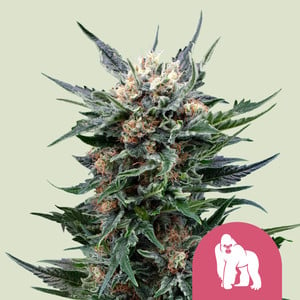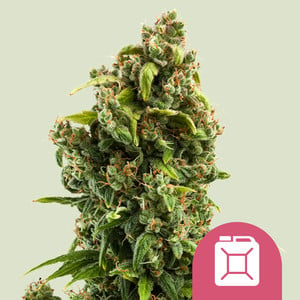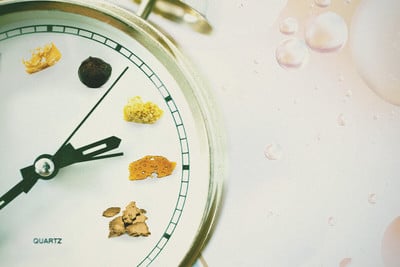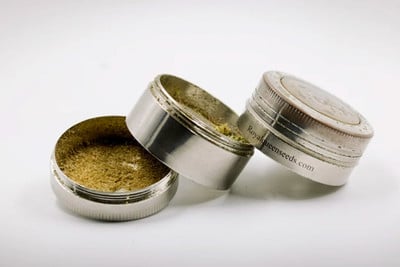.

The Complete Guide on How to Make Hash at Home
What is hash? How is it made? Our detailed walkthrough will answer these questions, and more, to help you better understand this wonderful cannabis product. We’ll also explore numerous hash-making methods so you can decide which is best for you!
Contents:
Key Points
- Hash is the oldest form of cannabis concentrate with a long and illustrious history.
- Discover the best solventless methods of making hash, from simple hand-rolling to more complex bubble hash procedures.
- Get acquainted with the best and most resinous weed strains for the job.
- Learn about the best ways to use hash, from smoking and vaping to making potent edibles.
Have you ever wondered how to make hash? It’s one of the most potent cannabis products out there. It can involve some tedious processes, but it’s not impossible to do on your own—far from it! In fact, you can make your own hash stash at home if you have the right tools at your disposal.
Did that pique your interest? Well, dear reader, we have a lot more for you. As you scroll through this article, you’ll learn more about what hash really is. Then, we’ll walk you through the different processes of making hash, which should give you an idea of what your preferred method would be.
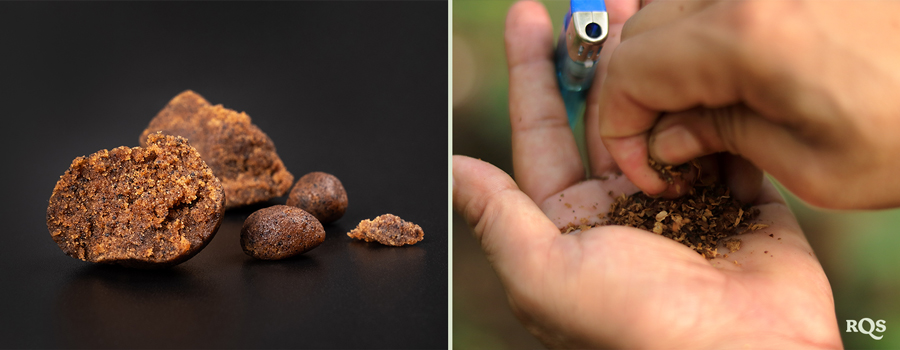
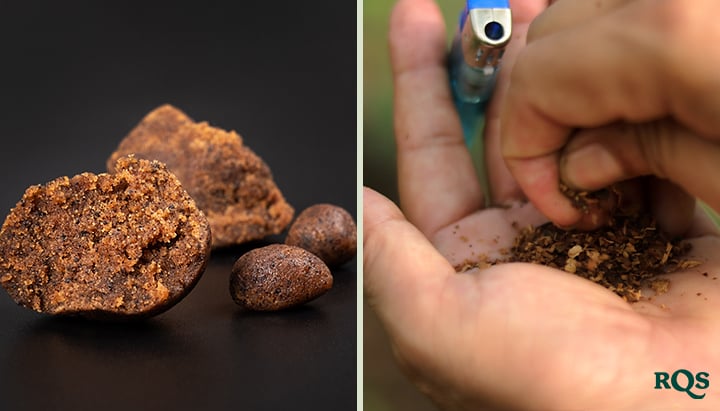
What Is Hash?
Hash, otherwise known as hashish, has been cherished for centuries and is one of the oldest and most traditional forms of cannabis concentrate. Rooted in the Middle East, North Africa, and the Indian subcontinent, hash penetrated cultural boundaries and became an important part of the spiritual and pharmacological practices of various ancient cultures.
Despite all of the innovative advances of the modern era, hash remains one of the most popular means of enjoying cannabis across the world.
Now that you’re more clued up on the historical significance of hash, let’s take a look at its composition.
Here’s hash in a nutshell: when you separate the trichomes from the cannabis plant, you get hashish. Now, what are trichomes, you ask? Look for the hair-like structures on the surface of your buds—these are the trichomes.
If you haven’t seen trichomes up close yet, try putting a bud under a magnifying glass or microscope and have a look for yourself. These minute structures contain all of the good stuff, such as terpenes and our beloved THC and CBD.
Although most trichomes are found on mature cannabis flowers, they can be sourced from all over the plant in smaller concentrations. Many growers save their “trim” (cannabis stems, leaves, etc.) because they can extract all the trichomes to make edibles or, as we'll soon detail, hash.
Just like modern products like shatter and wax, hash is a full-spectrum concentrate that contains all of the phytochemicals that a particular plant provides. The molecular diversity within hash and other concentrates gives users a complete and “pure” experience, as cannabinoids such as THC and CBD synergise with terpenes and other compounds via the entourage effect.
However, hash differs from modern concentrates when it comes to production. While the latter require more complex equipment and specialised professionals, the former often involves simply sifting dried flowers or rubbing fresh ones.
-
Hash vs Kief
Although closely related, hash and kief are distinct cannabis products. Kief is a sticky powder made up of loose trichomes, whereas hash is pressed kief formed into a block, ball, coin, or other shape.
If you’ve ever used a grinder with a mesh screen and collection chamber, the powdery mass of trichomes that develops in the bottom chamber over time is referred to as kief. It has a powdery, slightly sticky texture.
Growers and producers intentionally looking to harvest kief replicate this style of processing on a much larger scale. Using large mesh screens, they dry-sift kief into larger collection trays.
Hash, on the other hand, is the byproduct of kief that’s been extracted from the cannabis plant and subjected to a variety of processes. There are numerous hash-making methods out there, which we will discuss in the next portion of this article. Generally, it involves heating and pressurisation, with the end result being a pliable ball, a flat brick, or a coin.
People who love their concentrates but prefer an easy, affordable extraction option use kief as their primary starting point. It is highly psychotropic and fairly easy to source.
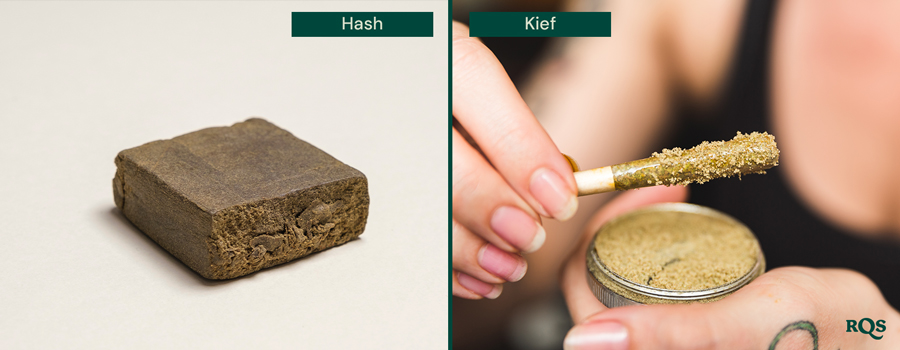
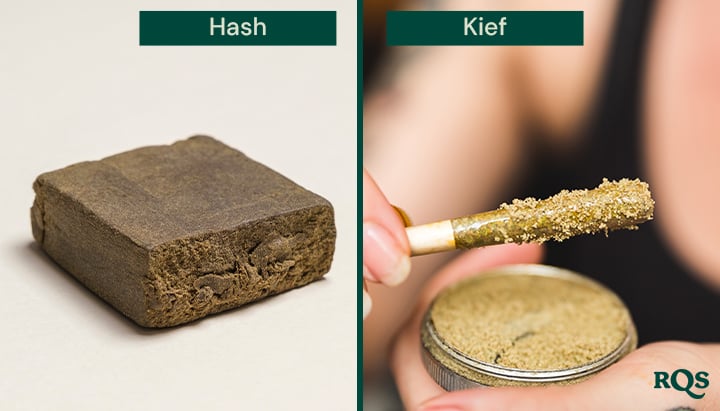
-
What Parts of Cannabis Plants Are Used to Make Hash?
Cannabis is more complex than you might think. You can use various parts of the plant’s anatomy to source trichomes:
- Male plants: Growers usually dispose of male cannabis plants to avoid pollinating their females. But don’t throw out your males just yet, because you can use them to make homemade hash. Though their overall cannabinoid content is lower than the females, the trichomes can still be put to good use. Just make sure to isolate them from your female specimens.
- Fan leaves: These are the largest and most recognisable leaves on the cannabis plant. They don’t contain as much kief as the sugar leaves but are still valuable for making hash.
- Sugar leaves: These are the very small, spiky leaves you’ll find embedded within the flowers. They’re called sugar leaves because they contain a fine dusting of trichomes on their surface.
- Dried buds: This is the best option. Dried buds are commonly used in dry sifting, which is also one of the easiest methods of making hash.
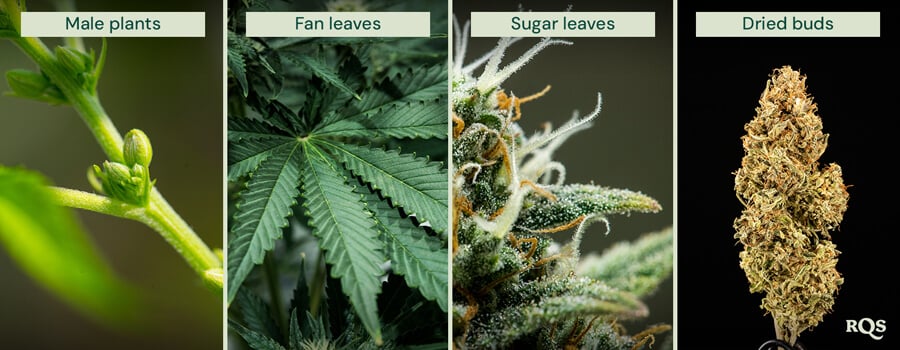
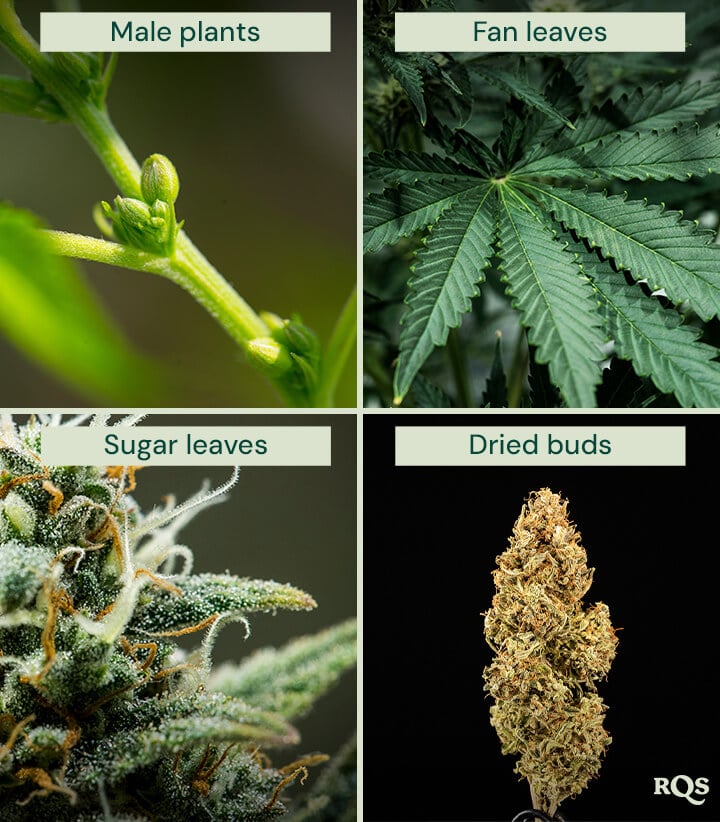
How Is Hash Made?
The basic concept of making hash is pretty straightforward. As previously mentioned, it involves collecting kief and forming it into a block, ball, or coin using a variety of methods. Let’s explore the key differences between solvent-based and solventless hash before digging deeper into various production methods.
-
Solventless Methods
This is the traditional way of making hash, which does not involve any solvents. Instead, you use mechanical means—which can be as simple as using your hands or setting up a silkscreen. In the latter case, you'd simply take your dried herb and rub it across a screen to separate the trichomes.
After you’ve turned the trichomes into a pile of kief, you scoop it up into moulds, heat it, and press it into blocks, spheres, or snakes.
-
Solvent-Based Methods
Hash created through the use of solvents is the more modern way of doing things. In this process, butane, propane, isopropyl alcohol, or CO₂ is used to extract the cannabinoids and terpenes from the trichomes.
Before the hash is safe to consume, the solvent residue must be purged. For BHO (butane hash oil), it’s either whipped into wax using a hot plate or put through a vacuum desiccation chamber.
Before we proceed, it’s important to consider the dangers associated with making solvent-based hash. Solvents such as butane, ethanol, and isopropyl alcohol can irritate the skin and also cause symptoms such as dizziness when inhaled. Long-term exposure to these chemicals can also result in organ damage.
These solvents are also highly flammable, meaning improper handling can lead to fire hazards. Failure to properly purge them can also contaminate the hash, exposing the lungs directly to their toxic effects when smoked or vaped.
With these safety concerns in mind, proceed with the utmost caution if you choose to pursue solvent-based methods. Work in a highly ventilated space, wear an appropriate face mask and make sure to properly purge your hash.
How to Make Hash at Home: A Look at Different Methods
Luckily for you, in this piece, we’re going to focus on the safer methods of making hash. Below are some hash-making techniques that don’t involve the use of solvents. For some methods, it’s worth fresh-freezing your weed beforehand to allow the trichomes to dislodge more efficiently from the buds.
-
Hand Rolling
This method is pretty self-explanatory. As the name suggests, the hand-rolling method involves handling large amounts of cannabis. Typically, this method is performed using dried, cured buds.
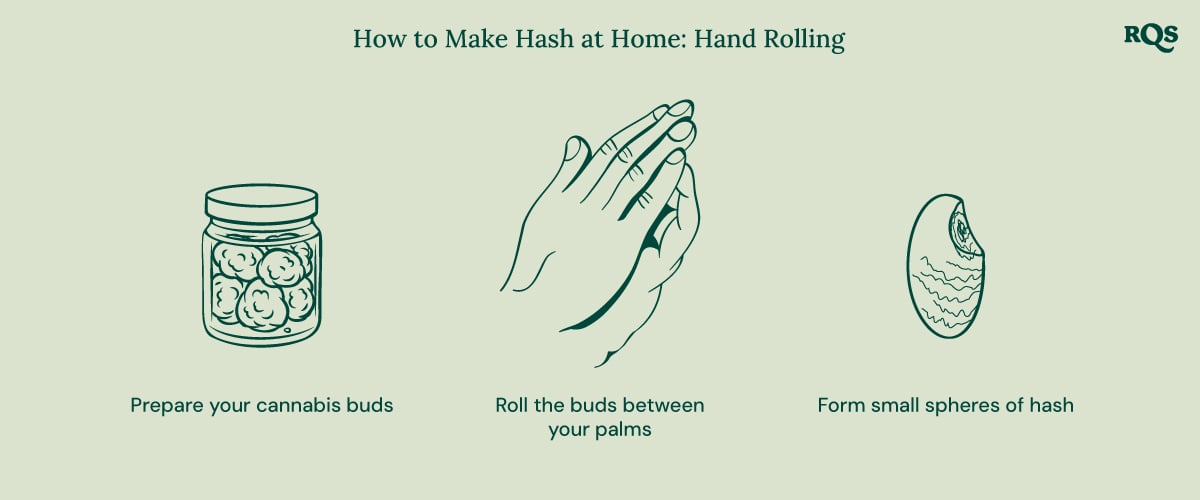
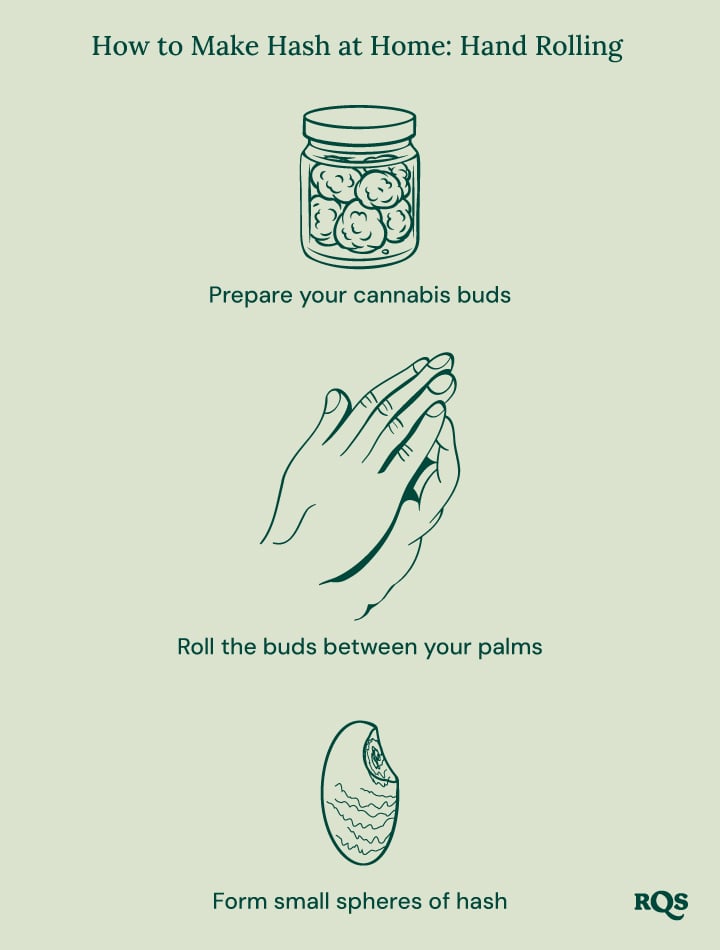
Rolling the buds between the palms, you'll soon see a black layer of sticky resin form. You’ll know you’ve gathered enough material once you’re able to form small spheres of hash.
Here’s an important factor to note: since you’re using your hands, expect to also collect some of the oils and dirt from the skin. So before you dive right in, be sure to wash your hands well.
| Pros |
|
| Cons |
|
| Pros |
|
| Cons |
|
-
Shoe Method
The shoe method compresses a small amount of kief for a low-hassle way of making hash. As the name suggests, it involves the use of your shoe.
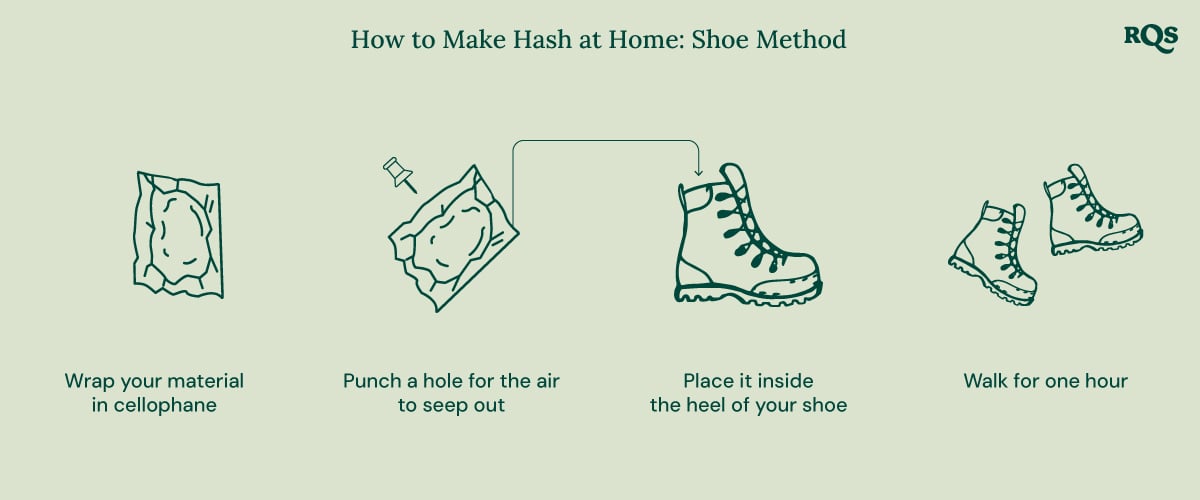
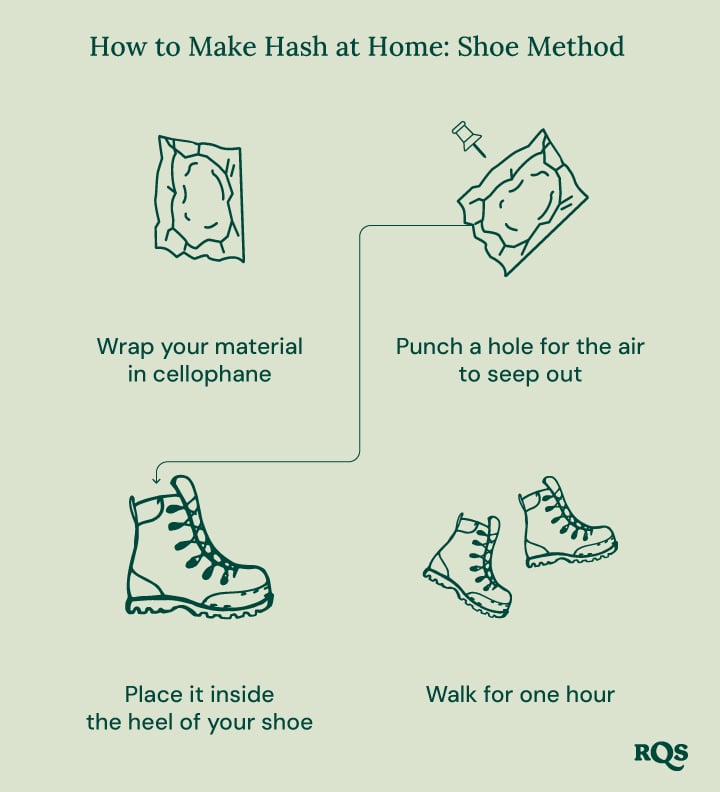
Equipment
- 5 g kief
- Small piece of tape
- Parchment paper or cellophane
- Pin
Directions
- Wrap your material tightly in either parchment paper or cellophane. Use the tape to prevent it from constantly unfolding. Avoid using plastic bags (the hash has a tendency to stick to it).
- Using a pin, punch a small hole through the package to allow the trapped air to seep out. Make sure it is securely sealed.
- Once the package is locked in tight, place it inside the heel of your shoe. You’ll want to use boots or any hard-soled closed footwear as they are much better for pressing.
- The weight you’ll administer as you walk, along with your body heat, will press the hash into a slab. This method will take between 15 minutes and one hour to complete.
| Pros |
|
| Cons |
|
| Pros |
|
| Cons |
|
-
Turning Kief Into Hash
Just like the first method on this list, pressing kief into hash is mostly hand labour. It is the most convenient method because you don’t need any special equipment—but do prepare yourself for quite an exercise. If you’re not used to this kind of method, expect some sore hands after.
For this process, you’ll want to use some medium to high-quality kief. Be sure it is freshly sieved and devoid of plant material for easier moulding.
Directions
- Measure out enough kief to fully cover the centre of your palm (it usually takes a few grams).
- Work with this little pile by rolling it together until it binds into one solid piece. Continue rubbing it in between the palms for about ten more minutes until you notice a change in density.
- Wrap the material in cellophane and make sure it is tightly sealed without excess air inside. Next, wrap this package in a few layers of damp cloth, newspaper, or paper towels.
- Place it onto a warmed skillet over very low heat. Be sure to turn it on frequently. You don’t need to heat this package for too long. All you’re after is for the material to stick together.
| Pros |
|
| Cons |
|
| Pros |
|
| Cons |
|
-
Flat Screening (Dry Sifting)
Flat screening is a very easy and straightforward method. All you’ll need is some dried herb and a silkscreen. That’s about it.
Do note that the smaller the holes you’re working with, the purer quality of hash you’ll get. Basically, the quality and quantity yielded will depend on the tools you’re using.
An important step is to freeze your stash for a good few hours beforehand to make separating the trichomes easier.
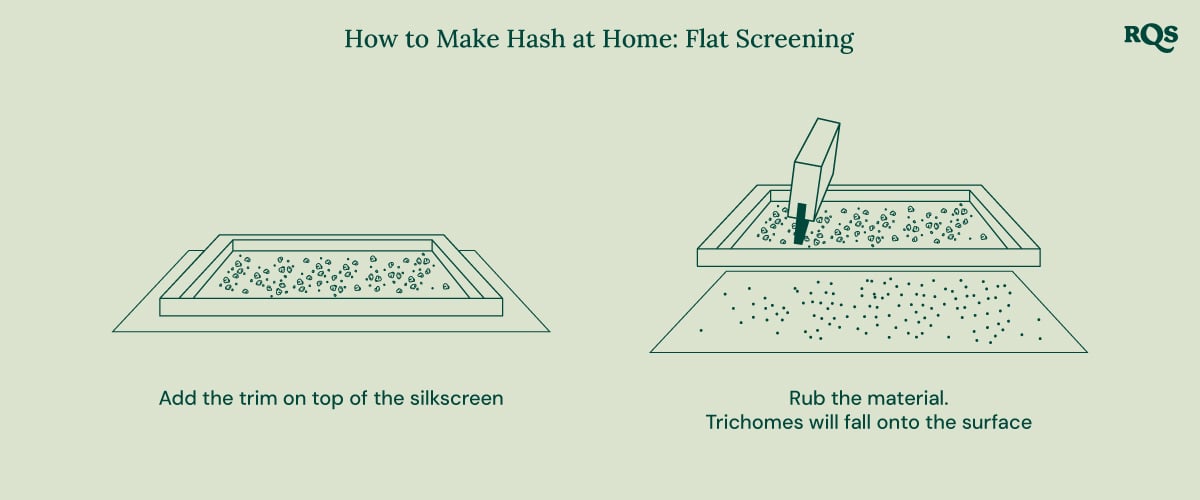
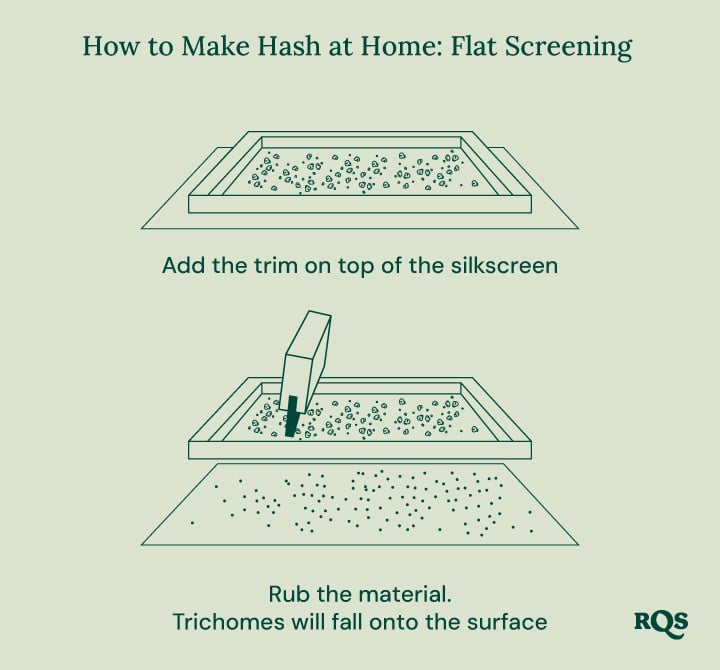
Directions
- To begin this process, place the screen on top of a flat and clean surface. Add the buds/trim on top of the screen.
- Gently rub the material against the screen in a circular motion. You’ll see all the trichomes fall onto the surface below the screen.
- Continue this process for as long as needed. You’ll know you have enough when you’ve got about 10% of the total weight of your trim in trichomes.
| Pros |
|
| Cons |
|
| Pros |
|
| Cons |
|
-
Blender Method
As the name suggests, you’ll need a blender for this method. But, like dry sifting, you’ll also need a silkscreen on hand.
Directions
- Place your trim into the blender and add enough water to submerge the material. Add a handful of ice and blend for up to a minute.
- After that short blend, pour the mixture into a glass jar, using the silkscreen as a sieve. Let the jar sit unattended for about an hour. During this time, you’ll see the trichomes settle on the bottom of the jar. That means you’re on the right track.
- Empty out about ⅔ of the water, but be sure to prevent those trichomes from spilling out. Refill the jar with ice water, and once again leave it to settle for up to five minutes. Re-drain ⅔ of the water, and repeat this process four to five times.
- Once you’ve emptied out as much water as you can, get a coffee filter and pour the solution over it to separate the water from the trichomes. Squeeze any excess water and allow the kief to dry.
It’s quite a tedious process, but the dried-out kief is your final product. No more heating or pressing is required, and you can use it as is in a bowl or joint after drying.
| Pros |
|
| Cons |
|
| Pros |
|
| Cons |
|
-
Dry Ice Hash (Bubble Hash)
The bubble hash method is considered to be the purest solventless hash-making process (dry ice is not considered a “true” solvent here) as the final product contains practically zero plant matter.
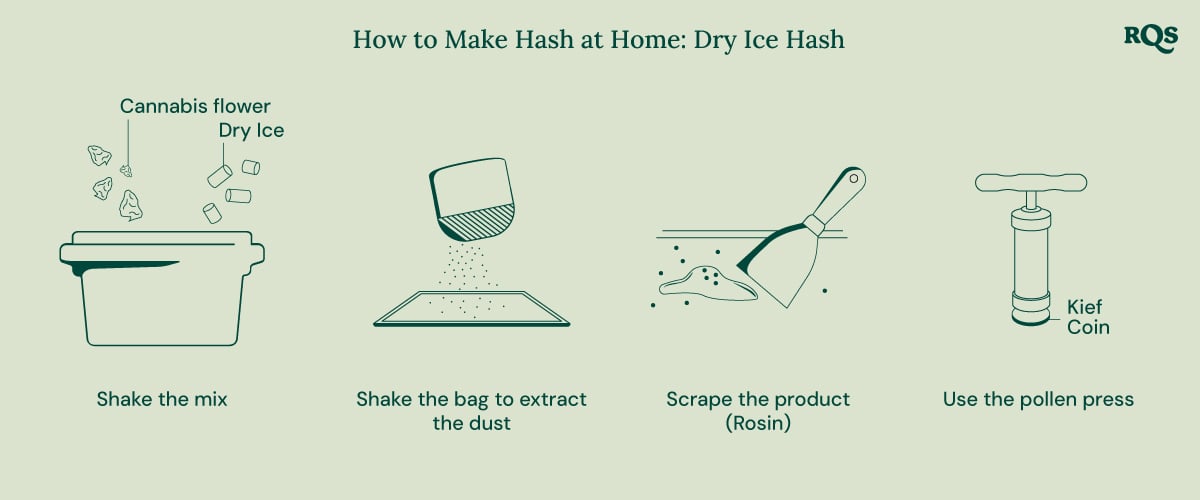
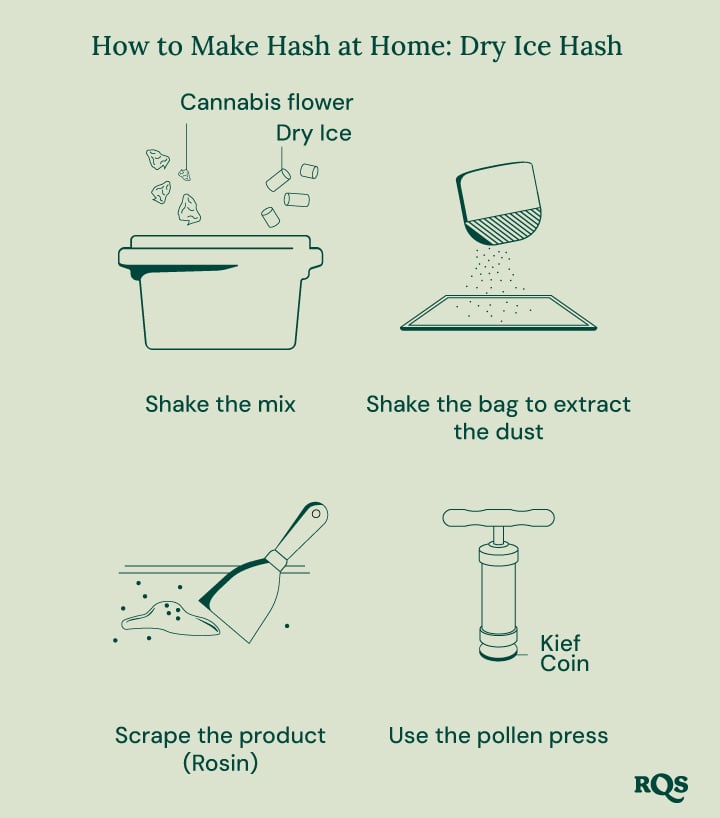
Equipment
- Dry ice
- Large bucket
- Gradually finer bubble mesh bags (73 μm for purest resin result)
- Credit card
- Pollen press (optional)
Directions
- Place the trim or flower into a large bucket with the dry ice. Stir and shake lightly for a few minutes to help the resin glands separate from the plant material.
- Wrap the bubble bags around the top of the bucket. Turn the bucket upside down to transfer everything into the bags, and place it onto a large, flat, and clean surface.
- Shake the bucket for a few minutes until you see the surface filled with amber-looking dust.
- Take a card or any flat and hard material and use it to scrape all the product (now resin) together.
- To turn the resin into hash, place the collected material into a pollen press for nice little kief coins.
| Pros |
|
| Cons |
|
| Pros |
|
| Cons |
|
-
Hot Water Bottle Method
The hot water bottle method is similar to pressing hash by hand. The difference, however, is that with this one, more heat is used to melt the waxy cuticle off each trichome head.
Equipment
- Cellophane or parchment paper
- Wine bottle
Directions
- Put the resin on top of the cellophane or paper, then fold it in half. Boil some water and fill the wine bottle with it. Allow it to cool for five minutes.
- Place the corked wine bottle on top of the resin-filled, folded paper and leave it there for 30 seconds. You should see the resin darken in colour.
- Using very minimal pressure, roll the warm bottle over the paper. With the help of the pressure from your hand and the heat from the bottle, the resin should melt with relative ease.
- Flip the paper over to the other side and repeat the same process.
- After this process is complete, the resin should look like a flattened but sticky and shiny meat patty. Fold the paper back over and continue the pressing process one last time before taking it out for use.
| Pros |
|
| Cons |
|
| Pros |
|
| Cons |
|
-
Charas
This method is exactly like the hand-rolling method, with the difference being that charas uses fresh, uncured buds. The tradition of making charas also spans back thousands of years on the Indian subcontinent. Therefore, pursuing this option helps to preserve the heritage of this ancient form of cannabis concentrate.
When making charas, most growers will remove a few cuttings from plants that are 2–3 weeks away from full maturity; others will wait until harvest time.
Like with hand rolling, the charas method involves rubbing the buds and trim gently between the palms of your hands until a thick coat appears. Scrape it off once done, and voilà: you have a product you can add alongside your premium bud in a joint, blunt, pipe, or bong.
| Pros |
|
| Cons |
|
| Pros |
|
| Cons |
|
-
Mechanical Drum
For those who have the resources and the desire to do as little labour as possible, the mechanical drum method will be best for you. It is essentially the dry-sifting method but uses a complex and efficient apparatus.
Here’s how it works: you place your trim into a container covered by a large silkscreen. The machine then shakes the container to release all of the trichomes—but do take note that this method is just for extracting kief. You will still need a pollen press to turn your product into hash coins.
For best results, freeze your cannabis for about three hours before placing it into the machine.
| Pros |
|
| Cons |
|
| Pros |
|
| Cons |
|
How to Dry Your Hash
Drying and curing your hash is vital to preserving its quality. Storing it moist will only kick off the process of mould development.
Bubble hash, in particular, requires sufficient drying and curing for best results. To rid the kief of moisture, it’s best to spread it out on a piece of cardboard lined with parchment paper. Spreading it out will increase the surface area and speed up the process, and the cardboard will draw out the moisture from the kief. You want to make sure you’re drying your bubble hash in a cool, dark environment.
After drying, it’s time to allow the hash to cure in whatever form you see fit (such as hash coins). Storing it in parchment paper in humidity-controlled glass jars is a good option and will help mature its flavour and aroma.
Check out the following best practices for successfully drying and curing your hash every time:
- Optimal temperature and humidity: Dry your hash in a cool and dark environment. Aim for an average temperature of 18–22°C and humidity of 50–60% to slowly dry your hash and avoid degrading cannabinoids and terpenes.
- Air circulation: Make sure to dry your hash in a well-ventilated space to promote proper airflow. Use fans on a low setting to prevent pockets of stagnant air while preventing your hash from drying too quickly.
- Careful curing: After drying your hash, you have the option to cure it to further enhance its flavour and smoothness. Consider pressing it into coins or blocks and storing them in a cool and dark place in airtight glass jars.
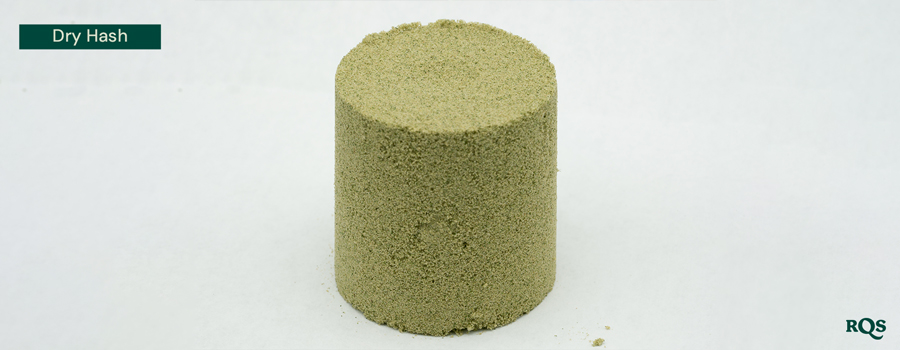
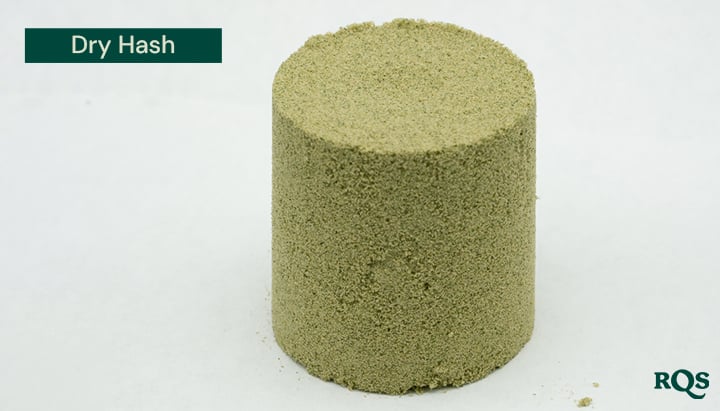
Choose the Right Hash-Making Method for You
Which hash-making method you choose will depend on the resources you have on hand and your preferences. Do you have the money to spend on more elaborate machines, and if you do, are you willing to spend it on that?
For certain methods, you will need to spend a little on the silkscreen, bubble bags, and dry ice, but the benefit is being able to make hash in the comfort of your own home. The best part is that it really isn’t that difficult.
Compare the pros, cons, and costs of each method below to decide which path you want to tread.
Hand rolling
- Pros: Simple, intuitive, and little equipment needed
- Cons: Time-consuming and messy
- Cost: Low
Shoe method
- Pros: Easy, hand-offs, and low-tech
- Cons: Time-consuming and risk of contamination
- Cost: Low
Turning kief into hash
- Pros: Convenient and versatile
- Cons: Requires physical effort and risk of overheating
- Cost: Low
Flat screening (dry sifting)
- Pros: Preserves quality and quick process
- Cons: Requires proper tools
- Cost: Medium
Blender method
- Pros: High yield and efficient
- Cons: Relatively hands-off
- Cost: High
Dry ice hash (bubble hash)
- Pros: Pure product with large batch potential
- Cons: Messy and requires some expertise
- Cost: High
Hot water bottle method
- Pros: Simple and easy to manage
- Cons: Risk of overheating
- Cost: Low
Charas
- Pros: Traditional, unique, and cheap
- Cons: Labour-intensive and messy
- Cost: Low
Mechanical drum
- Pros: High yield, efficient, and consistent
- Cons: Expensive and requires electricity
- Cost: High
The Best Strains for Crafting Hash
Now that you’re aware of the many different ways to make hash, check out some of the best strains for the job below. They each offer something unique, but all of them produce boatloads of THC contained in copious quantities of resin.
Royal Gorilla
A firm favourite amongst hash makers, the following traits make Royal Gorilla the perfect pick:
- Resin production: High
- Trichome density: High
- Parent strains: Sour Dubb x Chem Sis x Chocolate Diesel
- THC content: 27%
- Terpene profile: Myrcene, limonene, caryophyllene
- Flavour: Diesel, earth, lemon
- Indoor height and yield: Grows to 90–160 cm and produces 500–550 g/m² after a flowering time of 8–10 weeks
- Outdoor height and yield: Grows to 130–170 cm and produces 550–600 g/plant ready to harvest in mid-October
Royal Gorilla
Sour Dubb x Chem Sis x Chocolate Diesel
500 - 550 gr/m2
90 - 160 cm
8 - 10 weeks
THC: 27%
Sativa 50% Indica 50%
550 - 600 gr/plant
130 - 170 cm
Middle of October
Calming, Clear
Sour Diesel
Another key contender, Sour Diesel weighs in as one of the best strains for making hash for the following reasons:
- Resin production: High
- Trichome density: High
- Parent strains: Original Diesel x (Northern Light x Shiva x Hawaiian)
- THC content: 19%
- Terpene profile: Caryophyllene, limonene, myrcene
- Flavour: Diesel, chemical, skunk
- Indoor height and yield: Grows to 90–160 cm and produces 475–525 g/m² after a flowering time of 10–11 weeks
- Outdoor height and yield: Grows to 150–200 cm and produces 550–600 g/plant ready to harvest in late October
Sour Diesel
|
|
Original Diesel x (Northern light x Shiva x Hawaiian) |
|
|
475 - 525 gr/m2 |
|
|
90 - 160 cm |
|
|
10 - 11 weeks |
|
|
THC: 19% |
|
|
Sativa 70% Indica 30% |
|
|
550 - 600 gr/plant |
|
|
150 - 200 cm |
|
|
Late October |
|
|
Clear, Physically Relaxing |
ICE
Otherwise known as Indica Crystal Extreme, the clue is in the name as to why ICE makes stunning hash:
- Resin production: High
- Trichome density: High
- Parent strains: Afghan x Northern Light x Skunk
- THC content: 18%
- Terpene profile: Caryophyllene, myrcene, linalool, pinene
- Flavour: Earth, mint, pepper, pine
- Indoor height and yield: Grows to 80–120 cm and produces 400–450 g/m² after a flowering time of 8–10 weeks
- Outdoor height and yield: Grows to 150–200 cm and produces 500–550 g/plant ready to harvest in September
Safety and Legal Considerations
Making hash at home comes with some risks, especially when using solvents. As a general rule, try to avoid using solvents altogether and opt for safer, solventless methods. In cases where you choose to use solvents, always work in a well-ventilated area and wear protective eyewear, gloves, and clothing.
While making hash, use stainless steel or silicone tools where possible to avoid contamination. Furthermore, ensure all of your equipment is properly cleaned and sanitised using food-grade products.
Legally, hash production varies widely between countries and states. Always check local and national laws before making hash at home.
How to Consume Hash
There are several different ways to enjoy hash, and each option offers a unique experience. Check out the most common ways to use the product, and the pros and cons of each, below.
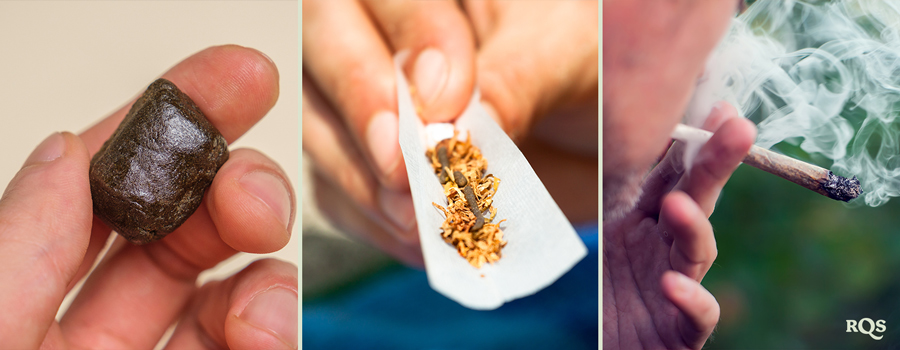
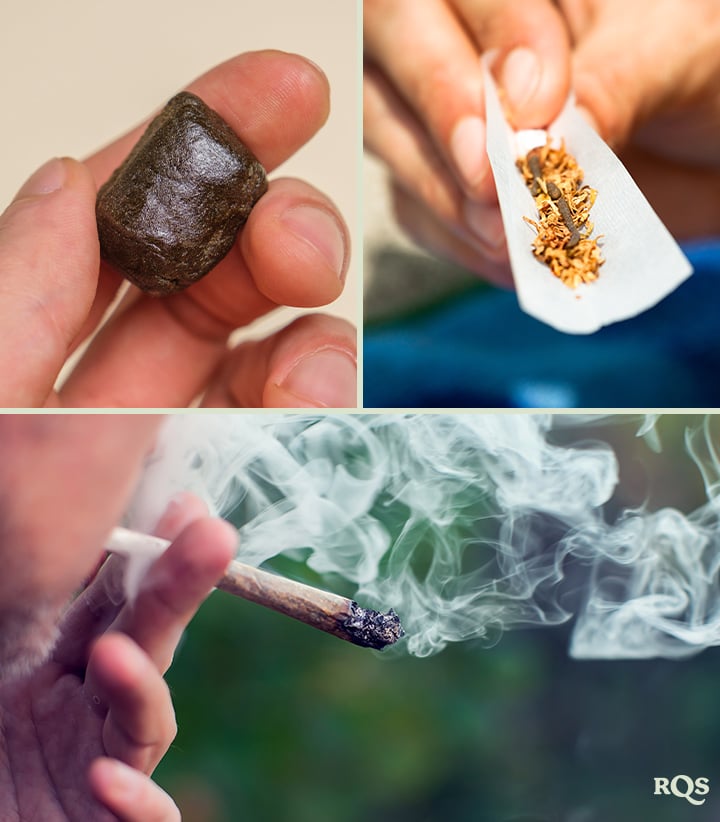
-
Smoking Hash
Users can add hash to joints, blunts, and bong bowls. While quick and easy, smoking presents some safety concerns.
To smoke hash, simply crumble it into a joint or bowl as evenly as possible over ground dried flowers. Alternatively, lightly heat your hash to soften it and roll it into a sausage-like shape before placing it into a joint.
| Pros |
|
| Cons |
|
| Pros |
|
| Cons |
|
-
Vaping & Dabbing Hash
You can also vape or dab hash using a dab rig or electronic device designed for concentrates. This method preserves the flavours of hash and allows users to experience the concentrate in its purest form.
When dabbing hash, simply heat up the nail or banger until it's hot. Next, place a small piece of hash on the surface and inhale as the vapor is released.
When vaping, place the desired amount of hash into your device’s oven or chamber. Select your preferred temperature, wait for your device to heat up, and take a hit.
| Pros |
|
| Cons |
|
| Pros |
|
| Cons |
|
-
Cooking with Hash
You can also use your hash stash to make butter and oil to infuse a long list of edible products, from brownies and cakes to sauces and soups.
| Pros |
|
| Cons |
|
| Pros |
|
| Cons |
|
You’ve Graduated From the Hash Masterclass
Congratulations—you’ve discovered almost everything worth knowing about hash! You’re now aware of all the different types of hash, how to make them, and their pros and cons. You’ve also learned how to dry hash, and you’re informed about the very best cannabis strains for the job. Finally, you’ve discovered the best ways to put it to use.
Now, it’s time to put all of this information into practice. Choose your strains, select your best hash-making technique, and enjoy this timeless cannabis product!


























